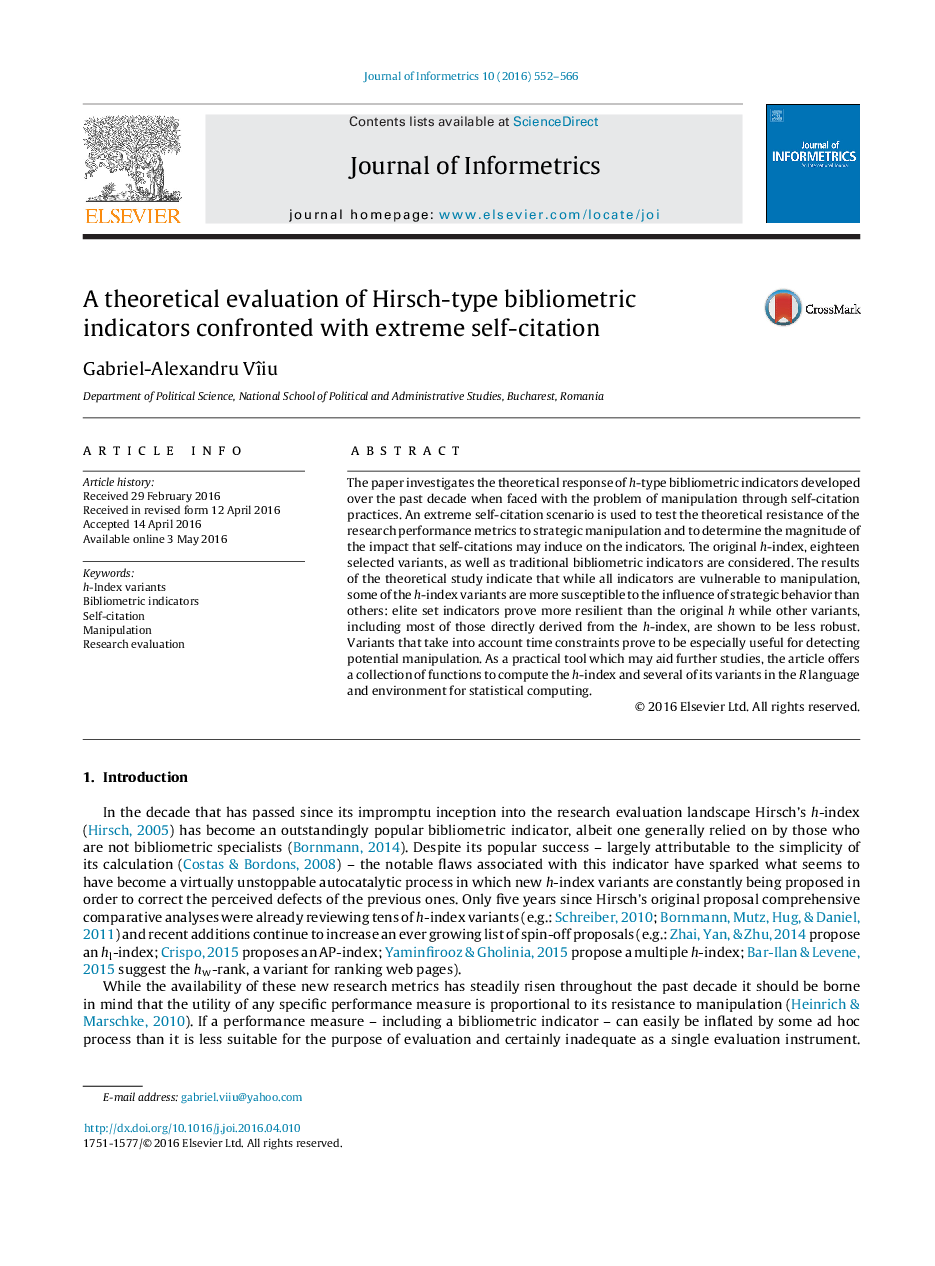| Article ID | Journal | Published Year | Pages | File Type |
|---|---|---|---|---|
| 523372 | Journal of Informetrics | 2016 | 15 Pages |
•Extreme self-citation is used to test the theoretical response of h-index variants to manipulation.•Algorithmic implementation of the h-index and of its variants is offered in the R software.•All bibliometric indicators prove vulnerable to manipulation but to different degrees.•Elite set indicators – π, w, h(2) – prove more resilient than the h-index while indicators that emphasize productivity prove less robust.•Time-dependent variants prove useful in detecting potentially manipulative citation practices.
The paper investigates the theoretical response of h-type bibliometric indicators developed over the past decade when faced with the problem of manipulation through self-citation practices. An extreme self-citation scenario is used to test the theoretical resistance of the research performance metrics to strategic manipulation and to determine the magnitude of the impact that self-citations may induce on the indicators. The original h-index, eighteen selected variants, as well as traditional bibliometric indicators are considered. The results of the theoretical study indicate that while all indicators are vulnerable to manipulation, some of the h-index variants are more susceptible to the influence of strategic behavior than others: elite set indicators prove more resilient than the original h while other variants, including most of those directly derived from the h-index, are shown to be less robust. Variants that take into account time constraints prove to be especially useful for detecting potential manipulation. As a practical tool which may aid further studies, the article offers a collection of functions to compute the h-index and several of its variants in the R language and environment for statistical computing.
